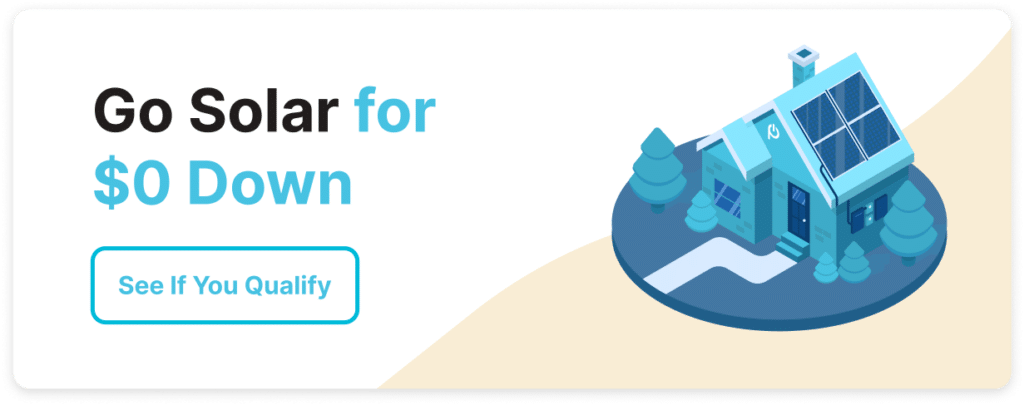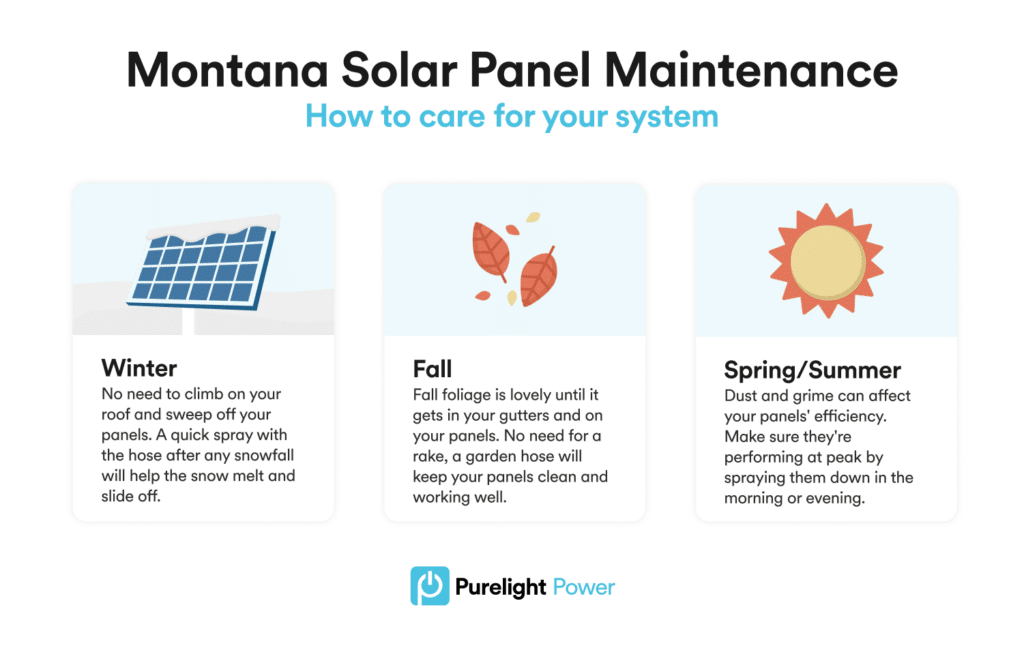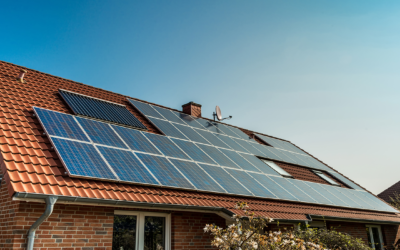With plenty of sunny days to enjoy the beauty of Montana in the summer, and crisp (if cold) winters, it’s no wonder we refer to our state as high, wide, and handsome.
But homeowners interested in going solar, or who have a newly installed solar energy system, might be wondering how the weather throughout the year will affect their solar panels.
Especially given the way the Chinook winds influence the weather in Montana, we’re all used to keeping an eye on the weather forecast.
Your solar system is an investment and you want to make sure you care for it properly.
In the next few paragraphs we’ll cover everything about solar panel maintenance Montanans need to know to care for their solar panels throughout the year, no matter the weather.
Rain and Solar Panels Maintenance in Montana
While most of the precipitation Montana sees comes in the form of snow, late spring and early summer still sees a fair amount of rain.
Rainy weather might cause your yard to turn into a muddy mess, it actually helps clean your panels.
Rain and snow both act as a wash cycle courtesy of mother nature. After a long, dusty afternoon in June, a summer rainstorm can help clean your panels so they can make the most of the long hours of summer sun. Snow also helps your panels stay clean.
Solar and Snow in Montana
During a winter storm, the snow that accumulates on your panels won’t stick around for long.
As the sun hits the panels, they’ll heat up and the snow will melt. With a system like those Purelight Power installs, your panels will be installed on an incline, which helps the snow slide right off.
No need to climb up on your roof and sweep them clean.
Even with more intense snowfall during winter storms, a Purelight solar system won’t get damaged. The panels we use are rated to withstand more than 100 pounds of snow per square foot, and temperatures down to -80 degrees. But what if the snow is packed on so heavily it doesn’t just slide off?
No special equipment is required to clean your panels between the professional cleanings you’ll want to get a few times a year.
Simply attach a spray nozzle to your hose and turn it on at a high setting, and use the water to help melt the snow. You will want to make sure the water coming out of the hose is a similar temperature to the weather outside, and avoid a sudden change in the temperature of the panels that can cause the glass cover to crack.
If for whatever reason you can’t clear your panels of snow, there’s no need to worry. The sun’s UV rays will still penetrate through thinner layers of snow and be captured by your panels. Even during a blizzard, your solar energy system is helping to power your home with net metering.
How Do Leaves & Debris Affect Solar?
In the autumn and winter, if you’re a bit over the cold, a nice Chinook might mean seeing some welcome (slightly) warmer temperatures.
But with high winds come swirling leaves and even twigs blowing across your yard. While debris is slightly more problematic for your panels than rain or snow, no need to break out your leaf blower or rake.
So long as a whole tree branch isn’t sitting on your panels, most debris from trees and bushes in your yard can easily be cleared. While it might take a bit longer than rinsing away leftover snow, once again all you need is your garden hose.
Turn your hose’s spray nozzle to a power wash setting, and use it to clear away any leaves.
Once again, just make sure you’re not spraying your panels with icy water during the warmest part of the day to avoid causing any sudden temperature changes to your panels that can cause the glass to crack.
In the rare instances where some sort of debris gets onto your panels that won’t rinse away, like stubborn sap from an overhanging tree, or your house is in the migratory path of Canada geese, your best bet is calling in a professional.
Any cleaning that might require a solvent or soap-mixture should be done professionally to avoid damage to the surface of your panels.
Solar Panels and Pollution
Montana is usually known for its breathtaking, wide open sky. Most of us assume that beautiful blue sky also means fresh, clean air.
But with wildfires in the summer, and inversions in the winter causing air to hang around and stagnate, Montana still experiences periods of high pollution and poor air quality.
Beyond the concerning way pollution from wildfires, natural gas and coal burning power plants, and other polluting sources harms our health, it can also affect panel production.
When pollution from the air settles on your panels, it can create a film that reduces efficiency. The reduction in efficiency should never be too much, but you might still find yourself wanting to give your panels a quick clean.
Once again, your garden variety garden hose is your best bet for safely cleaning your solar panels. Turn the water on, make sure the temperature of the water is similar to how cold or warm it is outside, turn the nozzle to the power wash setting, and give your panels a quick rinse.
In the rare event where your panels are covered by pollution that won’t rinse off, you’ll want to contact your solar installer. They can refer you to a professional who will clean the panels safely, and avoid doing any damage that might void the warranties that come with your panel.
This type of cleaning usually only needs to happen once or twice a year.
Clean Solar Power and Easy Cleaning
We hope this blog has helped dispel any concerns about the maintenance of your solar energy system being time intensive.
Ready to stop renting your power from utility companies using dirty energy sources like coal and natural gas? You can generate clean energy right on your own roof with a custom and affordable system from Purelight Power!
Find out now if your roof qualifies with our quick, 30 second quiz.






